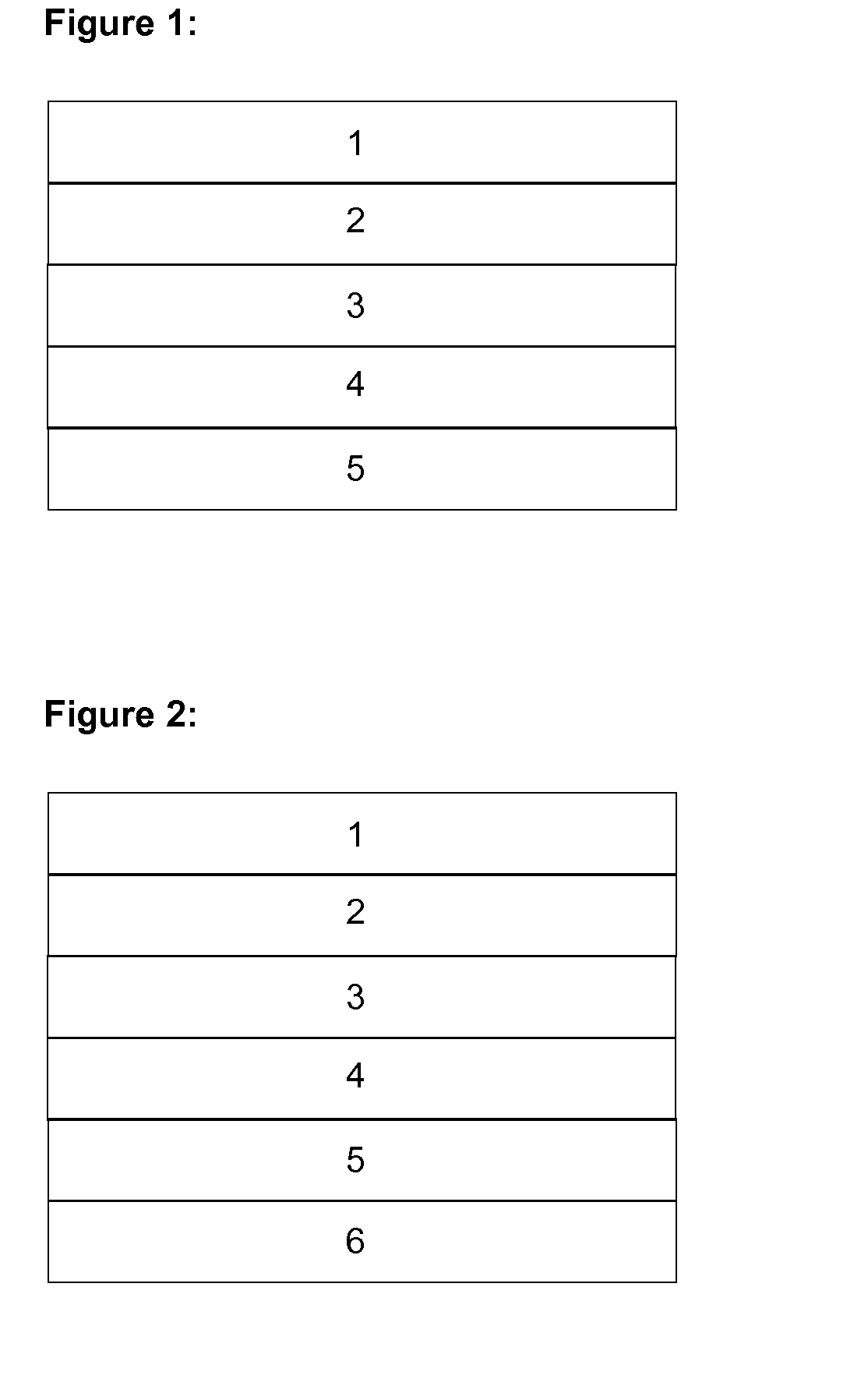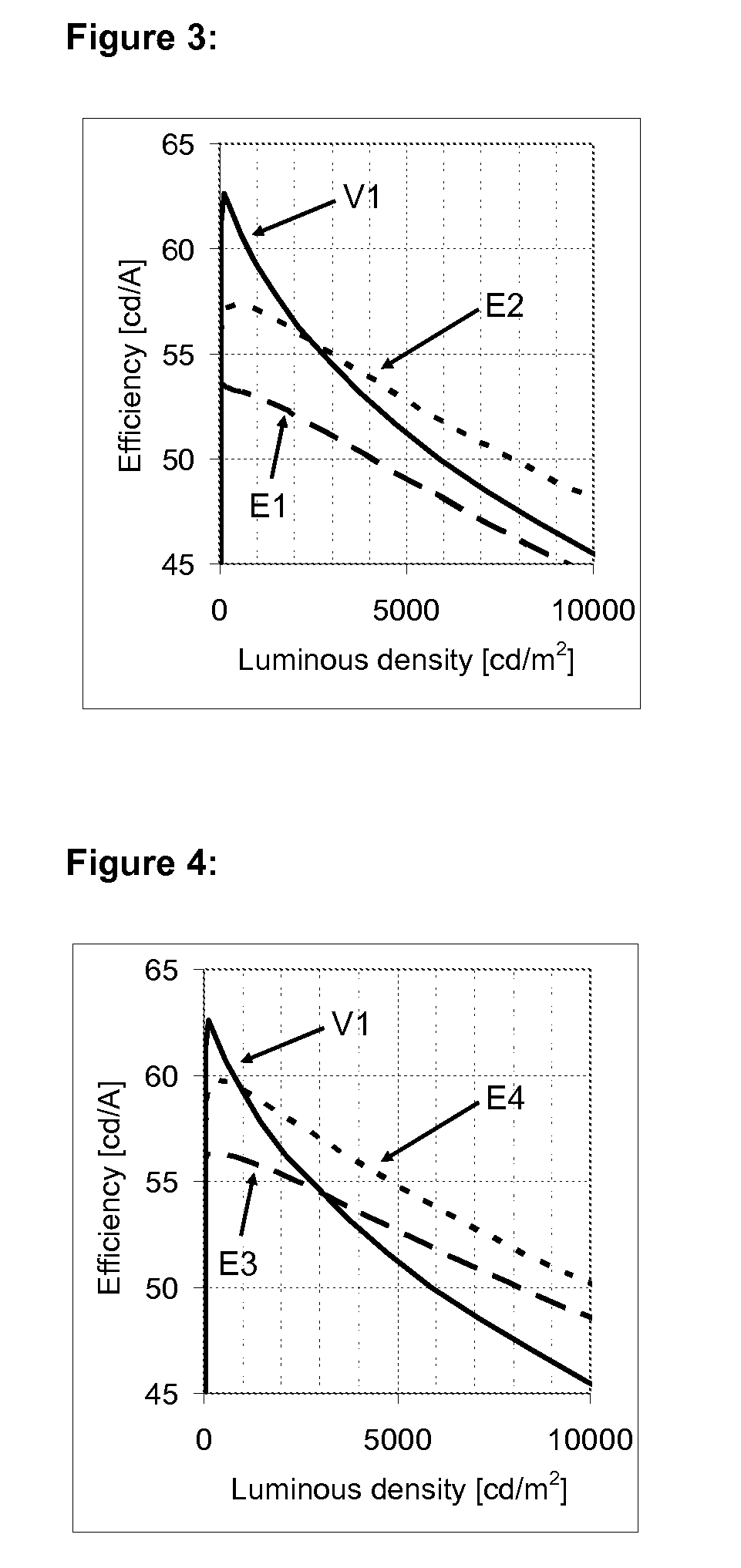Organic electroluminescent device
a technology of electroluminescent devices and organic materials, applied in thermoelectric devices, triarylamine dyes, luminescent compositions, etc., can solve the problems of high efficiency, low efficiency, and “roll-off” behaviour at high luminous densities, and achieve the effect of improving efficiency and/or lifetime, roll-off behaviour and/or processability
- Summary
- Abstract
- Description
- Claims
- Application Information
AI Technical Summary
Benefits of technology
Problems solved by technology
Method used
Image
Examples
examples
Production of OLEDs
[0121]OLEDs according to the invention and OLEDs in accordance with the prior art are produced by a general process in accordance with WO 2004 / 058911, which is adapted to the circumstances described here (layer-thickness variation, materials used).
[0122]The data for various OLEDs are presented in Examples V1-E34 below (see Tables 1 and 2). Glass plates coated with structured ITO (indium tin oxide) in a thickness of 150 nm are coated with 20 nm of PEDOT (poly(3,4-ethylenedioxy-2,5-thiophene), applied by spin coating from water; purchased from H. C. Starck, Goslar, Germany) for improved processing.
[0123]These coated glass plates form the substrates to which the OLEDs are applied. The OLEDs have in principle the following layer structure: substrate / hole-injection layer (HIL) / optional interlayer (IL) / hole-transport layer (HTL) / emission layer (EML) / optional hole-blocking layer (HBL) / electron-transport layer (ETL) / optional electron-injection layer (EIL) and finally a ca...
PUM
 Login to View More
Login to View More Abstract
Description
Claims
Application Information
 Login to View More
Login to View More - R&D
- Intellectual Property
- Life Sciences
- Materials
- Tech Scout
- Unparalleled Data Quality
- Higher Quality Content
- 60% Fewer Hallucinations
Browse by: Latest US Patents, China's latest patents, Technical Efficacy Thesaurus, Application Domain, Technology Topic, Popular Technical Reports.
© 2025 PatSnap. All rights reserved.Legal|Privacy policy|Modern Slavery Act Transparency Statement|Sitemap|About US| Contact US: help@patsnap.com



